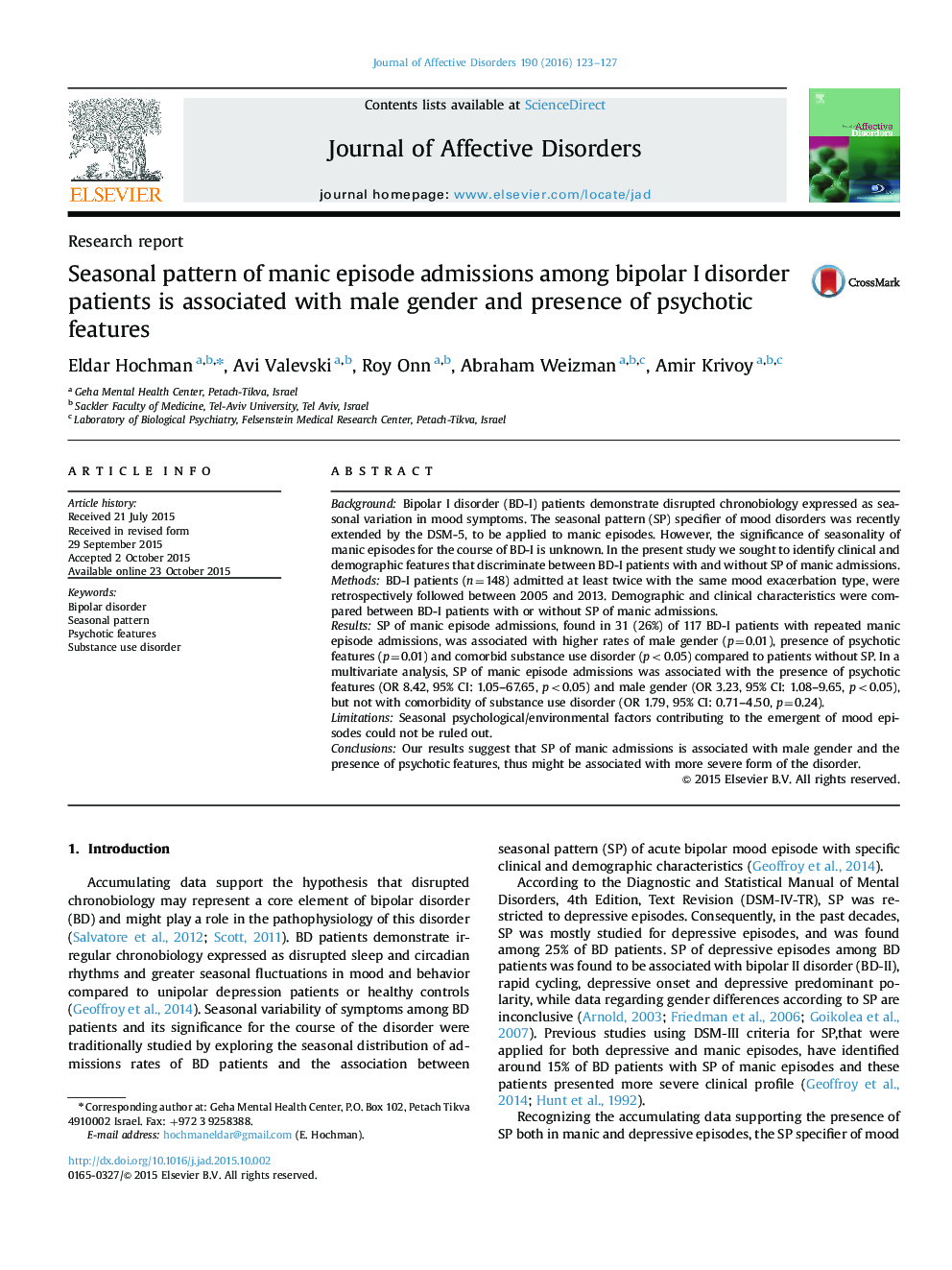| Article ID | Journal | Published Year | Pages | File Type |
|---|---|---|---|---|
| 6230669 | Journal of Affective Disorders | 2016 | 5 Pages |
â¢Seasonal pattern of manic episodes was found in 26% of Bipolar I disorder patients.â¢Seasonal pattern of manic episodes was associated with higher rates of male gender.â¢Seasonal pattern of manic episodes was associated with psychotic features.â¢Our findings support the inclusion of manic polarity in DSM-5 seasonal specifier.
BackgroundBipolar I disorder (BD-I) patients demonstrate disrupted chronobiology expressed as seasonal variation in mood symptoms. The seasonal pattern (SP) specifier of mood disorders was recently extended by the DSM-5, to be applied to manic episodes. However, the significance of seasonality of manic episodes for the course of BD-I is unknown. In the present study we sought to identify clinical and demographic features that discriminate between BD-I patients with and without SP of manic admissions.MethodsBD-I patients (n=148) admitted at least twice with the same mood exacerbation type, were retrospectively followed between 2005 and 2013. Demographic and clinical characteristics were compared between BD-I patients with or without SP of manic admissions.ResultsSP of manic episode admissions, found in 31 (26%) of 117 BD-I patients with repeated manic episode admissions, was associated with higher rates of male gender (p=0.01), presence of psychotic features (p=0.01) and comorbid substance use disorder (p<0.05) compared to patients without SP. In a multivariate analysis, SP of manic episode admissions was associated with the presence of psychotic features (OR 8.42, 95% CI: 1.05-67.65, p<0.05) and male gender (OR 3.23, 95% CI: 1.08-9.65, p<0.05), but not with comorbidity of substance use disorder (OR 1.79, 95% CI: 0.71-4.50, p=0.24).LimitationsSeasonal psychological/environmental factors contributing to the emergent of mood episodes could not be ruled out.ConclusionsOur results suggest that SP of manic admissions is associated with male gender and the presence of psychotic features, thus might be associated with more severe form of the disorder.
